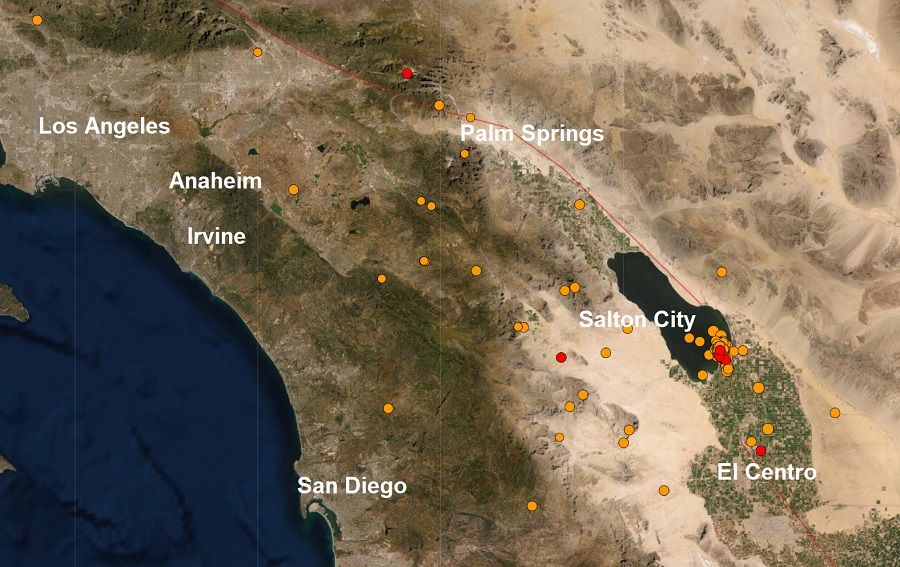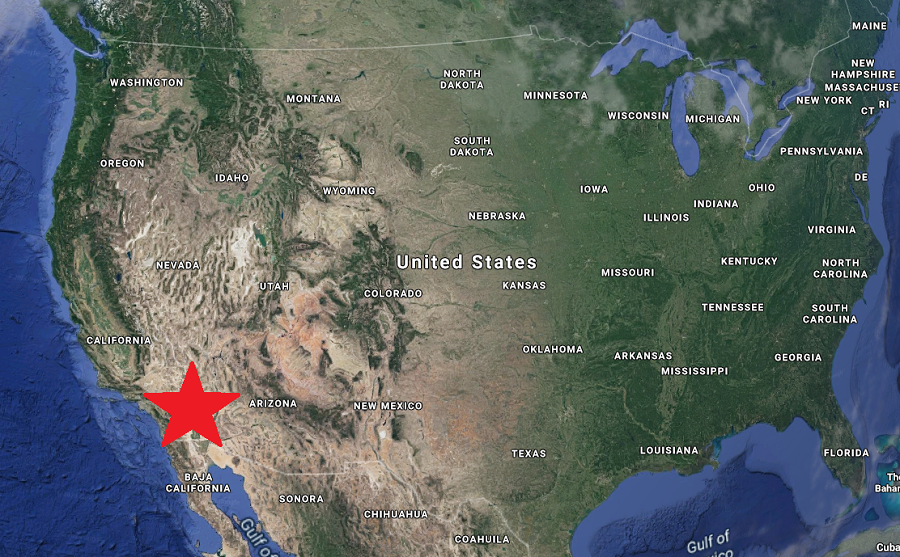
After taking a short break for days, an earthquake swarm has started up again over southern California, puzzling scientists with its unusual pattern. In the week ending last weekend, more than 1,020 earthquakes rocked the area around the Salton Sea, with some earthquakes felt in Los Angeles to the northwest, San Diego to the southwest, Palm Springs to the north, and El Centro to the south. Today, 206 fresh earthquakes have struck the area again in the last 24 hours.
The strongest earthquake of today’s series was a 4.3 which struck 8 miles west-southwest of Niland, California at a depth of only 1.3 miles, making it a very shallow earthquake. Shaking from that specific earthquake was felt in San Diego and the general area surrounding the Salton Sea.
An earthquake swarm, according to the USGS, is a sequence of mostly small earthquakes with no identifiable mainshock. Swarms are usually short-lived, but they can continue for days, weeks, or sometimes even months. They often recur at the same locations. Most swarms are associated with geothermal activity. Swarms are usually not tied to aftershocks. Aftershocks are a sequence of earthquakes that happen after a larger mainshock on a fault. Aftershocks occur near the fault zone where the mainshock rupture occurred and are part of the “readjustment process” after the main slip on the fault. Aftershocks become less frequent with time, although they can continue for days, weeks, months, or even years for a very large mainshock.

This weekend’s significant earthquake swarm is occurring near the Salton Sea, a shallow landlocked lake with a high salt concentration in Riverside and Imperial counties of California. The Salton Sea sits near the San Andreas Fault at the southern end of the state of California. In this region, the Earth’s crust is being stretched. Most of the recent earthquakes are being tied to submerged faults near the southern end of the San Andreas Fault. Called the Brawley seismic zone, this extensional region connects the San Andreas with the Imperial Fault in southern California. Specifically, it appears much of the swarm activity is centered around the Westmoreland fault that runs through the area among dozens of fault lines that run through California.
Last weekend, a 5.3 earthquake struck about 6 and a half miles west of Calipatria at a depth of 3.6 miles. More than 700 residents from Los Angeles to San Diego to El Centro reported experiencing the quake to the USGS, including many that reported “strong shaking.” While the swarm continued for days, it took a pause, with no/limited activity until the last 24 hours.
Scientists say that while swarms aren’t rare to this area, the latest activity is somewhat out of character for the region. Dr. Debi Kilb from the Scripps Institution of Oceanography at San Diego’s University of California, took to Temblor to ponder whether the seismic events there are part of an earthquake swarm or an earthquake sequence. “Upon a deeper dive into the earthquake data, however, the latest series of quakes may actually be a mainshock/aftershock sequence. What that means for the residents of this shaken region doesn’t change: The chance of an earthquake exceeding magnitude-7 within the following month remains less than 1% . For researchers, though, these events offer a new perspective on the source physics of these earthquakes,” Dr. Kilb wrote.
While scientists like Dr. Kilb pour through seismic data to understand what is happening, why it’s happening, and what could happen next, she offers wise advice: “The take-home message here is that we live in earthquake country. We need to be prepared and have a protection and response plan in place. Building codes protect our structures, and regular quake drills sharpen our awareness. Be prepared, not scared.